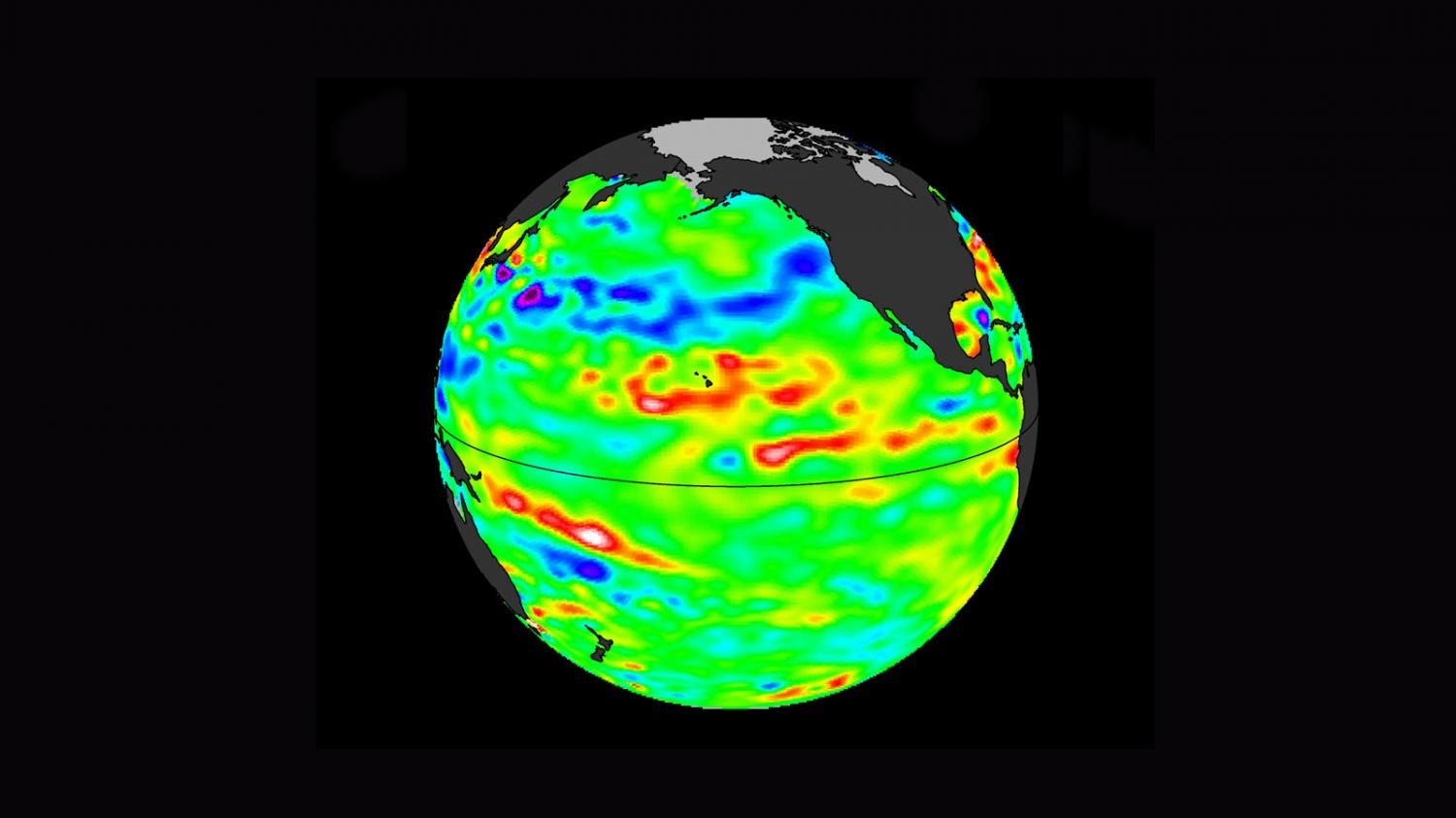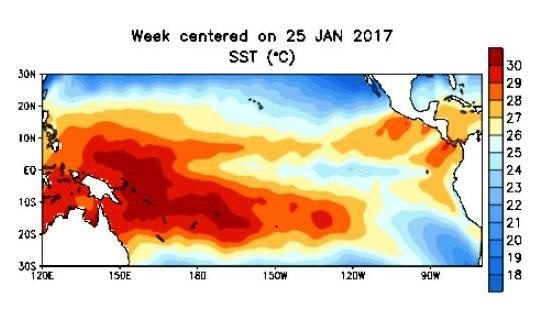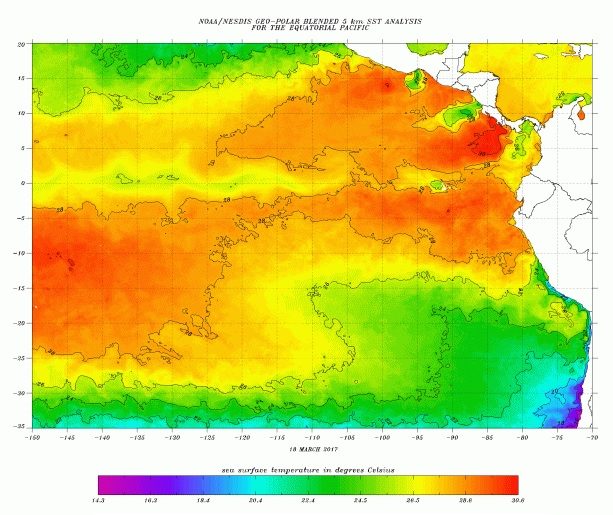
© PhysOrg
, warns Peruvian scientist Jorge Manrique Prieto. A new El Niño, in other words. Prieto, an expert in satellite remote sensing, explains that
literally thousands of square miles of hot water will hit Peruvian coasts in August.
When he uses the word "hot," Prieto is talking about 88 degrees Fahrenheit (31C) hot. He thinks this El Niño will therefore be more devastating than the last one because that one contained water "only" 81F (27C) hot.

This map shows temperatures as high as 31C
These masses of hot water will lead to evaporation up to four times normal and cause heavy precipitation, says Prieto.
On the Pacific Coast it will create greater problems than those caused by the 81F water known as Niño Costero, he said.The National Oceanic and Atmospheric Administration (NOAA)
confirms Prieto's observations (at least partially). "During January and February 2017, above-average SSTs (sea-surface temperatures) expanded within the eastern Pacific Ocean," says NOAA. "(There are) increasing chances for El Niño development into the fall." When you look at the NOAA map, you can clearly see the gigantic intensely red spots - the hot water masses - sliding towards Peru. The hot water masses measure more than 1,000 miles long (1600 km) and 450 meters deep. The first mass should hit the Peruvian coast in April and last until July. The second mass, a super monster, should arrive in August and last until October.
Where does the hot water originate?These masses of hot water are of volcanic origin, say Prieto. They originate south of the equatorial line in the depths of the Bismark Sea, the Solomon Sea and the Coral Sea, which contain more than 5,000 mini submarine volcanoes.

Previous El Nino showing 27C
When these underwater volcanoes erupt they heat the water to abnormal levels, triggering evaporation up to four times more than normal.
Volcanic El Niño (Volcanic Child)For this reason, El Niño Costero (the Coastal Child) should rather be called Volcanic El Niño (Volcanic Child) because it is generated by the eruptions of thousands of submarine volcanoes, says Prieto.
What triggers the underwater volcanic activity?The volcanic activity is regulated by the stars, specifically by the position or alignment of the planets, says Prieto. That alignment produces strong magnetic pressure on the igneous core, or magma, of the Earth, which stimulates submarine volcanic activity along the Ring of Fire.
Another factor is the sun, because solar storms strongly affect the earth's magnetósphere, says Prieto. As with planetary alignments, the solar storms produce magnetic pressure on the igneous core of the Earth and stimulate submarine volcanic activity.
This confirms what I've been saying for the past 20 years - that El Niños are triggered by underwater volcanic activity. (See
Not by Fire but by Ice, Chapter 10, "Fish Stew")
Note: This is a very loose translation of an article (in Spanish) by Victor Alvarado. First I used Google Translate. Then I translated the translation. Then I edited extensively. If you think this needs more clarification, please please free to comment.
Original article: PERÚ: SE VIENE OTRO "NIÑO MÁS DEVASTADOR (Peru: Another El Niño will come more devastating)
Thanks to Martin Siebert for this link
Manrique Prieto was the first scientist to alert on January 27, at 5.59 pm of this year, through an email addressed to the authorities and media about the formation of the hot water mass. So far, no one in authority appears to have listened.Peruvian authorities have to know it and you have to ask them why they hide it, says Prieto. And if they do not know, it would mean that they suffer from incompetence.
Reader Comments